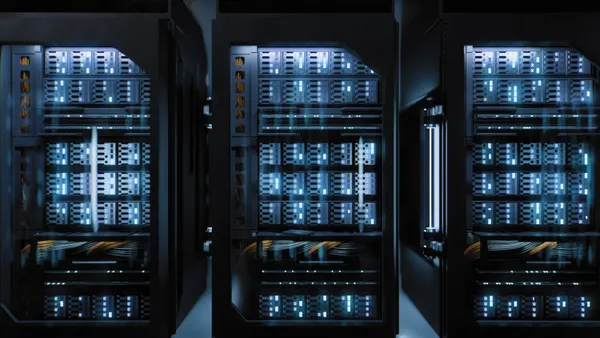Demand management in commercial and industrial applications comes in many forms: demand response, renewable energy, onsite generation, energy storage, and energy efficiency technologies. Each distributed energy resource (DER) provides either flexibility to better manage peak demand periods or efficiency to lower overall consumption, and many projects combine DERs to maximize demand management program results.
One C&I category that has been difficult to adequately address with traditional demand management tools is cold storage. Cold storage facilities store frozen food and run their refrigeration systems nearly non-stop to minimize temperature variations and to protect the food. These facilities include large frozen food warehouses (10,000 to 200,000+ square feet) owned by food processing companies, foodservice distributors, and third-party logistics providers as well as walk-in freezers (100 to 1,000+ square feet) inside grocery stores and restaurants. Cold storage has the absolute highest demand per cubic foot and is the third highest consuming category for most utilities.
These facilities have been targeted for demand management but with limited effectiveness due to their large energy demands and sensitivity to temperature fluctuations. When included in demand response programs these facilities are often unable to meet the call. A few of these facilities have taken advantage of their large rooftops by adding solar panels, but without an onsite storage medium that can adequately supplement their refrigeration equipment the benefits in the freezer are limited. This lack of effective storage for the industry has also limited the amount of demand that can be shifted and the duration of the shifts. Furthermore, in terms of efficiency to reduce refrigeration runtime while maintaining temperature requirements most of the low-hanging fruit for the industry (LED lighting, variable frequency drives, building envelope enhancements) has already been picked. Until now.
Now there is an effective behind-the-meter energy storage technology that economically provides both flexibility and added efficiency to these facilities. Intelligent Thermal Energy Storage (TES) systems from Viking Cold store energy in the form of cold inside frozen food storage facilities without the need for additional real estate or the loss of usable storage space. These systems have a 20-year life, no mechanical components, and 100% round trip efficiency that equates to a Levelized Cost of Energy (LCOE) of less than $0.02 per kWh.
Greater C&I Flexibility
TES systems add time-of-use flexibility with much more capacity and much longer discharge cycles than lithium-ion storage. One 93,000 square foot industrial facility in California found that TES provides enough energy storage to shed 300-500 kW for 13 hours per day, six days a week. This is accomplished each day while improving temperature stability by 50% during that same period.
Added Efficiency
The same California facility saw a 43% decrease in consumption during their 13-hour peak period without using more energy during the remaining 11 hours of the day. In fact, total freezer energy consumption was reduced by 35%.
On average Viking Cold TES technology improves an existing refrigeration system’s efficiency by 26%. The added efficiencies come from many factors. During the periods when refrigeration is active, the systems run at the designed optimal efficiency, similar to highway fuel efficiency in an automobile. Also, systems run more during evening hours when ambient temperatures are lower for maximum condensing efficiency. Additional efficiency is achieved due to the TES cells, rather than the food, absorbing up to 85% of the heat infiltration and consolidating it near the top of the room directly in the refrigeration air-flow. Lastly, it requires less refrigeration to remove the heat from the TES cells because the heat transfer rate is eight times higher than that of frozen food. All of this means the same BTUs of heat can be removed using fewer kWh.
More TES Benefits for Facilities
Beyond the energy and cost savings, there are several facility benefits that increase the likelihood cold storage operators will join and participate in TES demand management and efficiency programs.
Because this unique energy storage technology stores energy in the form of cold inside their freezers, facility operators can safely reduce grid-sourced energy for extended periods of time without risk to their product. They also receive the ancillary benefits of extended back-up temperature resiliency, reduced run-time and maintenance for their equipment, and improved temperature stability. By addressing these existing market needs with TES, more utilities and energy providers can introduce attractive demand management and efficiency programs to cold storage customers.










